Telling & Sharing Stories
Why does this theme stand out to you?
Have you ever read Library Mouse by Daniel Kirk (2007)? It is a picture book about mouse named Sam who lives in cozy a hole in the wall behind the Children’s Reference section of the public library. He just loves reading books. One day, he is inspired to write his own. “Write what you know, “ he remembers reading from a book about writing.
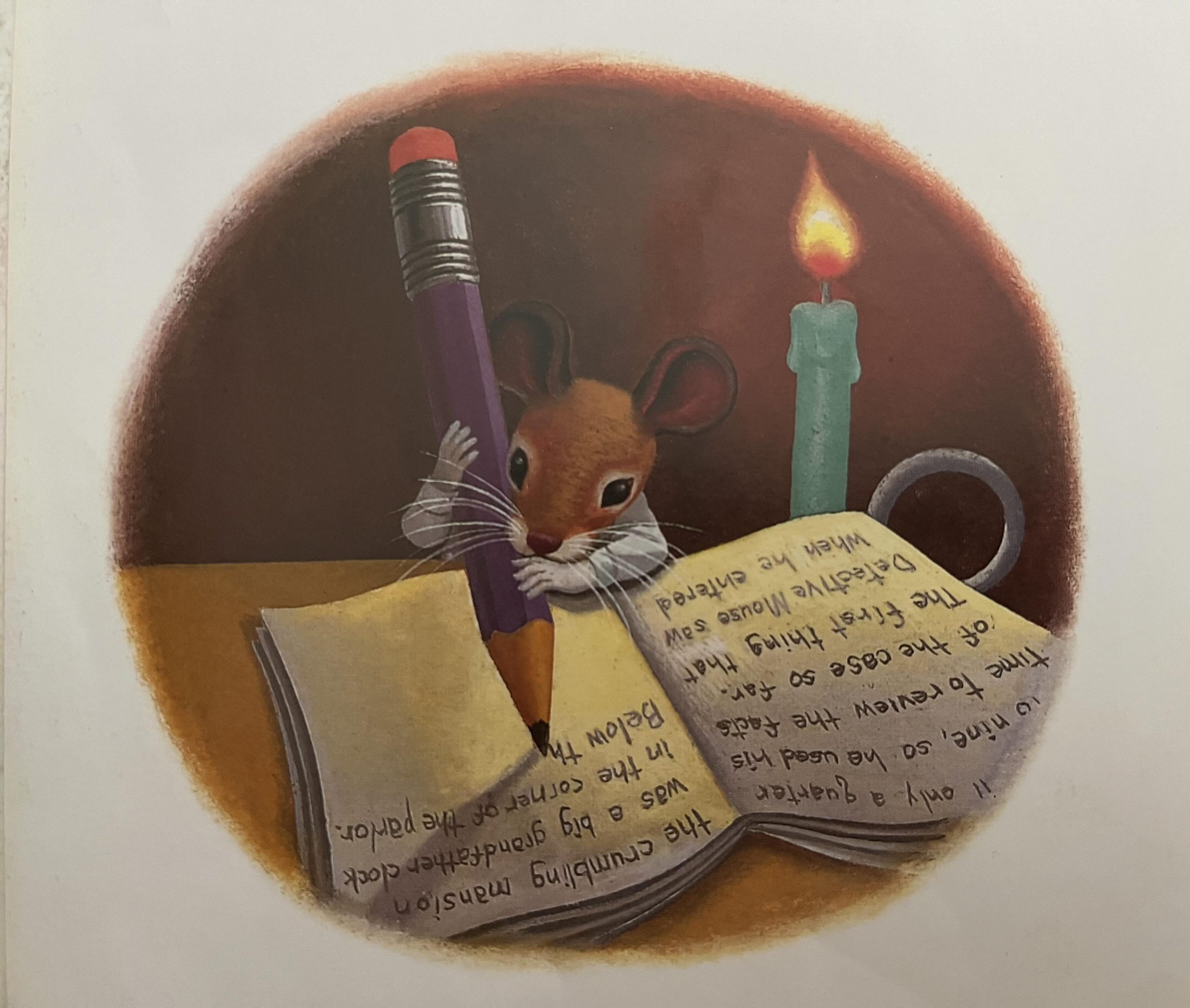
He begins to make his own books, leaving them on the library shelf for humans to find. After self-publishing three books, the librarian leaves him a note on the library bulletin board asking if he would agree to a “Meet the Author” event. He is nervous about this but gets ready for the event by making lots of mouse size books and sharpening some pencils. The following day, everyone is excited to meet the author. A tissue box with a note sits on the table and when the first child looks inside, she sees herself. “Am I an author?” she wonders.
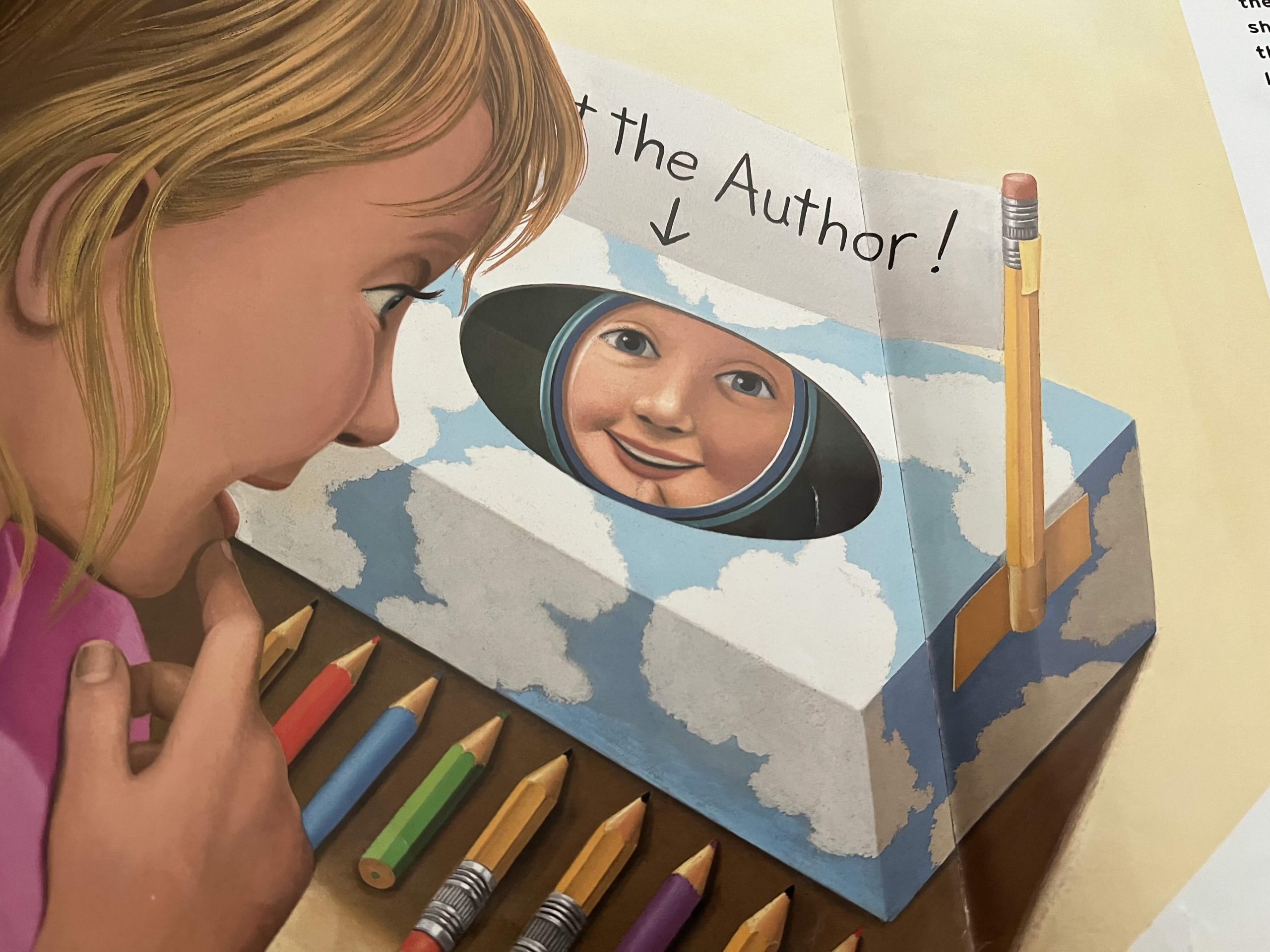
Soon, the children begin to write their own stories and share them with each other at the library. The theme of participatory service is well represented in this story as Sam inspires the children to tell their own stories, while the librarian creates space in the library for sharing them.
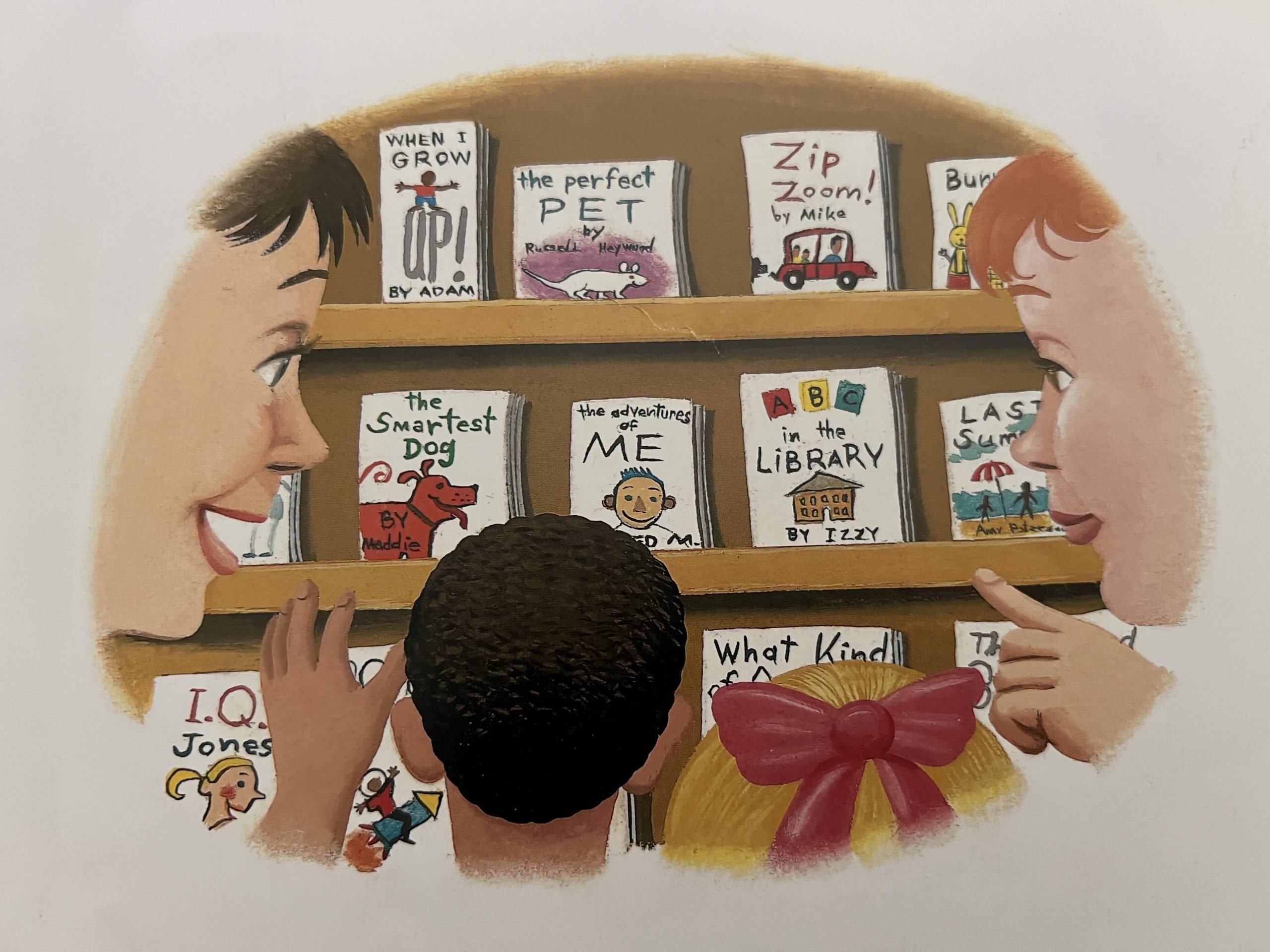
Connecting Past & Future
Can you connect it to your past experiences or future goals?
Since my time in art school, I have always been interested in the idea of viewer as participant. An exploratory project for MAAD (Material Art & Design) process class consisted of a green fabric mound with a zipper, which hoped the viewer would unzip, only to find another zipper, and finally a clay figure. My animation school grad project consisted of a Flash* based interactive website which the viewer could explore through clicks. A cardboard house installation invited the viewer inside to sit at a computer to access the project. Since then, technology has advanced further, allowing anyone with internet access to make interactive games or websites. Scratch, which uses block coding, makes it easy for kids to create animations, games, and interactive stories and the online community invites them to share and remix their creations.
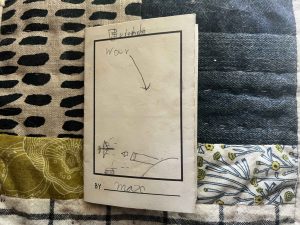 |
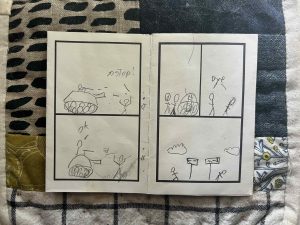 |
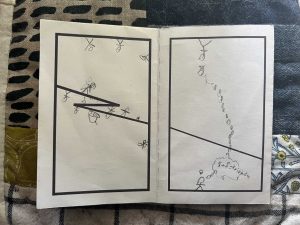 |
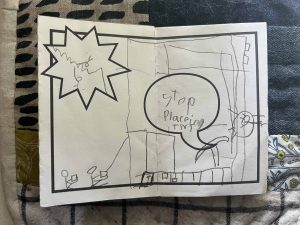 |
| Friends’ War, a mini comic by Max, age 9 (2018). | |||
Inspired by a comic arts exhibit at the Art Gallery of Ontario, I designed and distributed little one page comics for free at craft shows. These booklets were blank inviting young people to tell their own stories. You can download it here. Interactivity was away to draw the viewer into the work. As libraries have evolved beyond being book storehouses, community engagement becomes a key factor in how libraries can better serve their users.
“The evolution of libraries and library service will include a pronounced shift from libraries as book warehouses to libraries as centers for discovery, learning, and creation via any number of platforms.” (Stephens, 2016)
In the chapter, Age of Participation, Stephens (2016) asks, how can we capture the public’s attention despite one-click availability of information? By filling the library user’s needs beyond access to information. An interview with ArtHeart for a school assignment has become the starting point for creating a formal partnership with a community art organization and the public library. Future me dreams of providing consistent art programming, with a focus on wellness through art making, available across all library branches.
Power of Technology
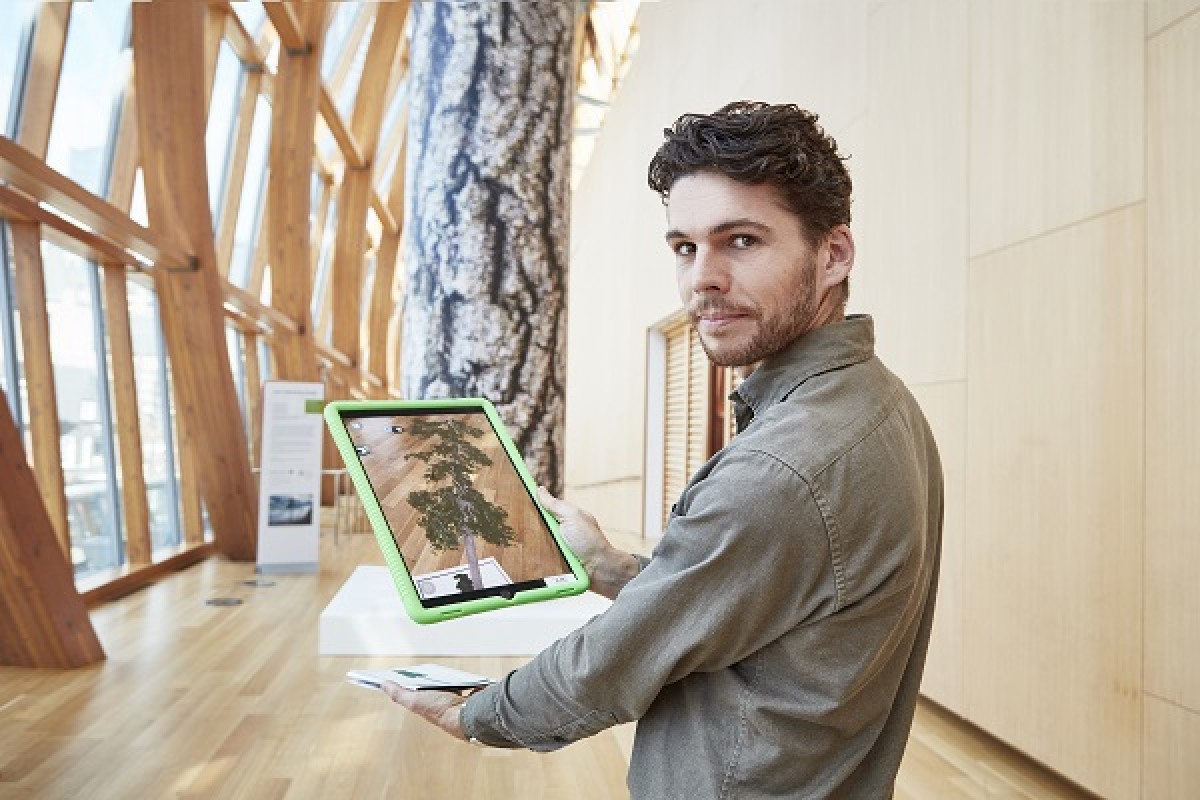
Art galleries and museums are extending their reach beyond the exhibit by using virtual and interactive elements. In 2018, my family and I visited the AGO to see the Anthropocene exhibit. This mind-blowingly beautiful and terrifying exhibit would inspire us to take action against climate change. Big Lonely Doug, a thousand year old Douglas fir tree stands alone on Vancouver Island but augmented reality (AR) was able to bring it to the AGO’s Galleria Italia for visitors to see. Technology as conduit for positive change; extends reach (Stephens, 2016), and breaking logistical barriers.
How might this idea shape your perspective on libraries, learning, and community?
The public library has a mandate to provide the users access to technology through public computers and internet access, take home WI-FI hotspots, STEM programs for children and youth, and Digital Innovation Hubs which provide access to 3D printers, computers that run Adobe Creative Suite, recording studios, and more. But it is not just about having these things available. Librarians and library staff must continuously find creative ways to inspire the public to engage with new technology through impactful programs and services.
Programs like Seniors E-Connect partner teen volunteers with seniors to help them with their technology. This program has been sometimes surprisingly meaningful for librarians, teens, and seniors as it fosters intergenerational bonds and friendships while creating opportunities for teens and seniors to build confidence. An upcoming card making program will introduce the public to the Cricut cutting machine and accompanying Design Space software while discussing age-ism and exploring creative ways to celebrate getting older.
The User is the Sun
Where do you see this theme showing up in practice?

In The User is Not Broken, Scheider (2006) reminds librarians that all technology will become obsolete. Librarians must adapt and change with the times, focusing NOT on format but on service. I can relate to this so much because it has been almost 20 years since my undergrad and trying to dig up my old work can be challenging as the formats are obsolete, and the programs no longer exist. But I am still here and I still want to create conditions for community participation.
A public suggestion board, like the one at Traverse Area District Library mentioned in this week’s lecture at (Stephens, 2025.), allows for transparency and interaction between the patrons and library staff. Patrons have opinions and maybe the staff don’t always want to hear them. Our library does have a whole department for dealing with user questions called Answerline. They can redirect the user as needed.

Just this week, a library patron informed me that the spines of the books on the bottom shelf of the Adult Fiction section are completely unreadable except for the call number because of how they are oriented. This is great for pages and staff but difficult for the public.
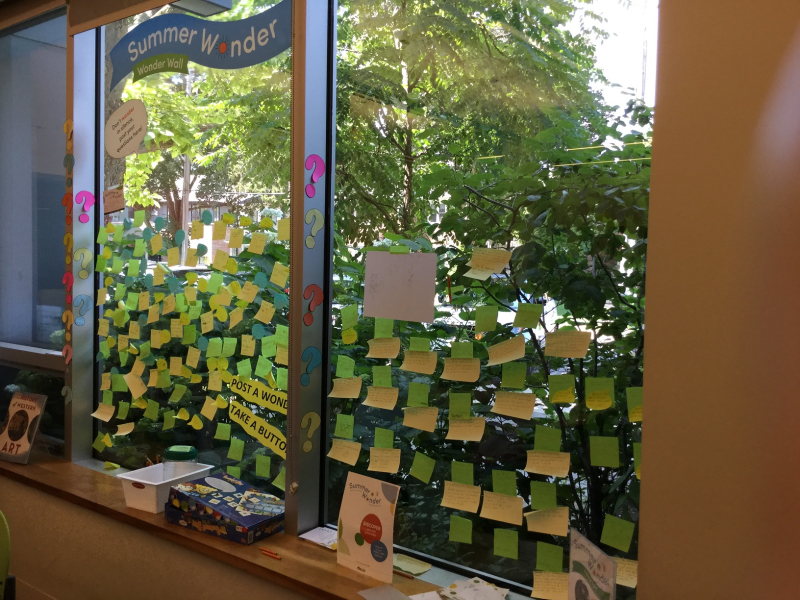
Every summer, the library creates a Summer Wonder wall that invites library patrons to write their questions on. Staff reply with a call number or a small paragraph with the answer.
The Library as the Community’s Space
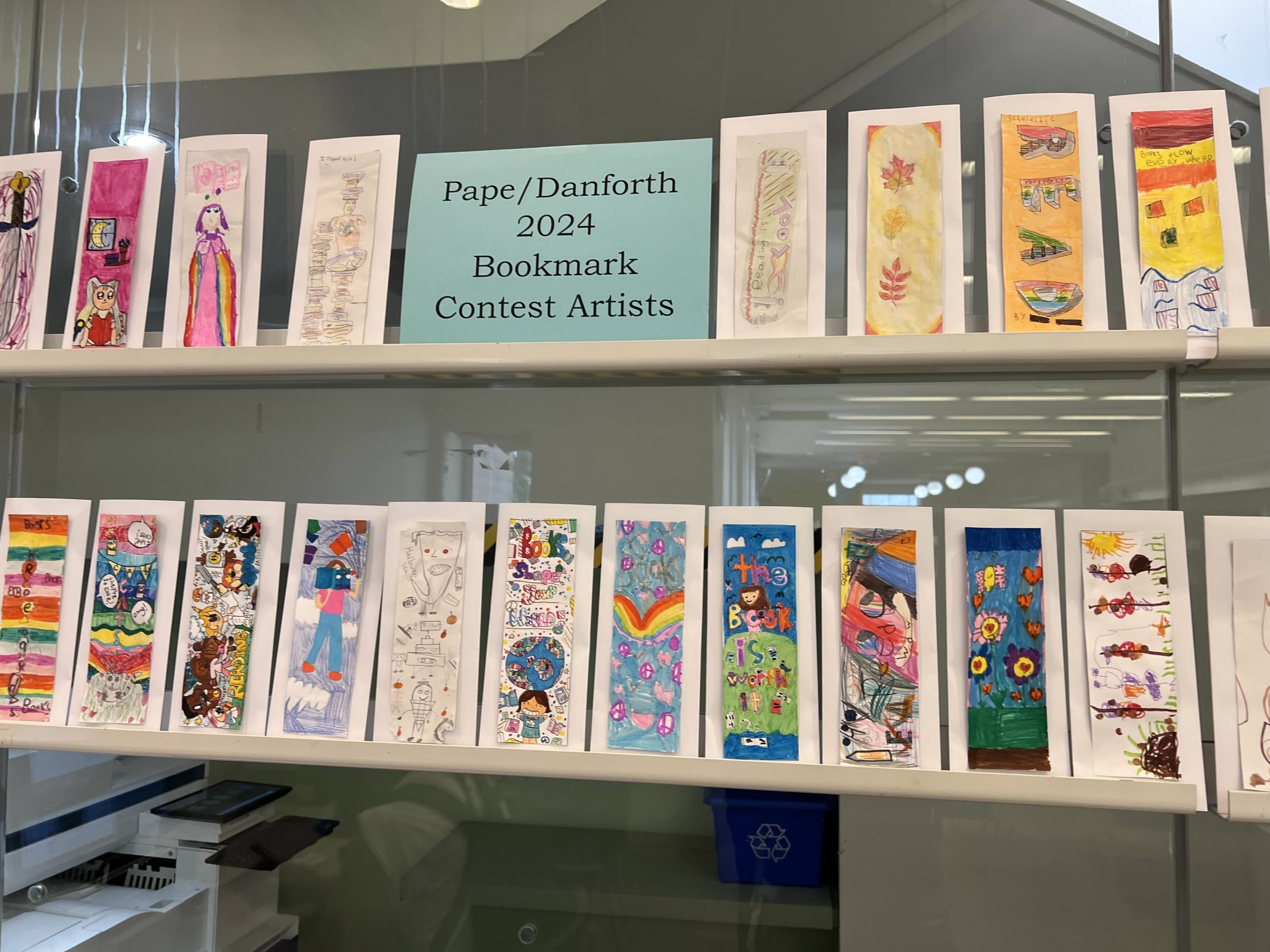
In my work as a public service assistant, I talk to people every day. These last few months at my current branch, I have been talking to art-loving seniors. One needs help registering for all the art programs at branches across the city. She then returns to colour copy her work. One was looking for seniors programs close to home as travelling can be a challenge. She was looking for a place to connect while being creative. One gentleman was talking about his love of painting and was so excited to hear that the library offers exhibition space. He had an art exhibition many years ago but it had been expensive. The application process for this year is now closed however I hope he applies in the future. I can already see that technology may be a barrier for him. These chats did make me wonder about creating a library art club for seniors or school age children (or both together) that meet on a weekly or monthly basis. At the end of the session, the work could be exhibited at the branch. A project like this would create a strong sense of belonging for library users. As Serhan Ada (Stephens, 2016) puts it:
“Participation occurs when someone welcomed as a guest feels as though they have become a host.”
References
Art Gallery of Ontario. (2018, October 1). The story of Big Lonely Doug. https://ago.ca/agoinsider/story-big-lonely-doug
ArtHeart. (n.d.). Celebrating 34 years of community engaged arts! 1991-2025. https://www.artheart.ca/
Kirk, D. (2007). Library mouse. Abrams Books for Young Readers.
Laurie. (2019, August 15). Summer Wonder: Creativity challenges and fascinating facts. https://torontopubliclibrary.typepad.com/kids-books/2019/08/creativity_challenges_fascinating_facts.html
Public Domain Pictures. (n.d.). Vintage sun. https://www.publicdomainpictures.net/en/view-image.php?image=80896&picture=
Schneider, K. G. (2006, June 3). The user is not broken: A meme masquerading as a manifesto. Free Range Librarian. https://freerangelibrarian.com/2006/06/03/the-user-is-not-broken-a-meme-masquerading-as-a-manifesto/
Stephens, M. (2016). The heart of librarianship: Attentive, positive and purposeful change. ALA Editions.
Stephens, M. (2025). Hyperlinked library participatory service & transparency [Video]. Panopto. https://sjsu-ischool.hosted.panopto.com/Panopto/Pages/Viewer.aspx?id=2a19a4b6-e945-4d2e-abf1-aef3014172a
Toronto Public Library. (2025). Customer feedback standards and practices. https://www.torontopubliclibrary.ca/about-the-library/customer-care/

Daisy,
Starting your post with Library Mouse absolutely had me hooked! I love how you connected it to participatory service and making library spaces about sharing stories. I also really enjoyed reading all the practical and very doable examples of bringing user participation into the library!
Hi Joy,
Thank you! I always get excited when I see families borrowing that book.